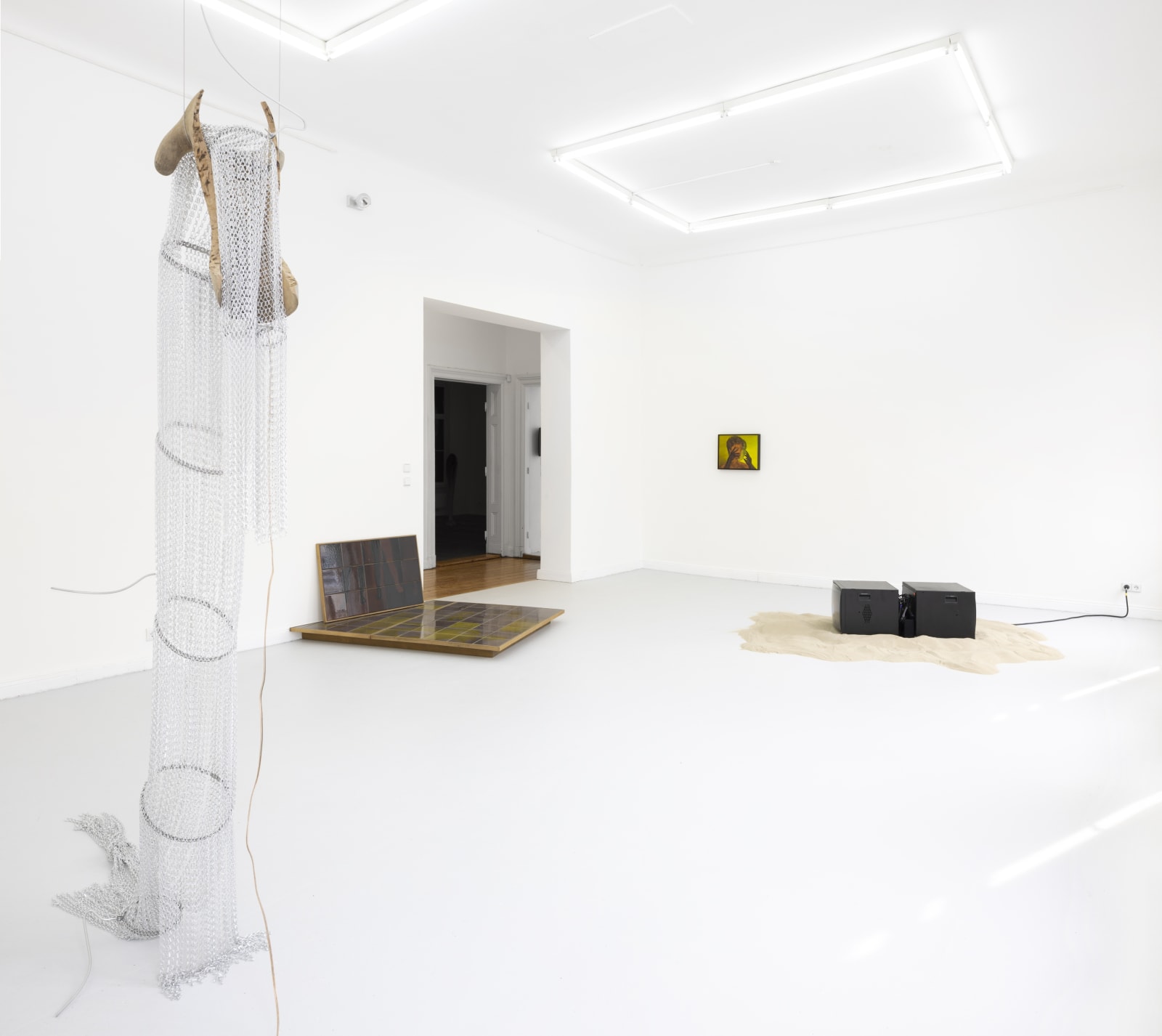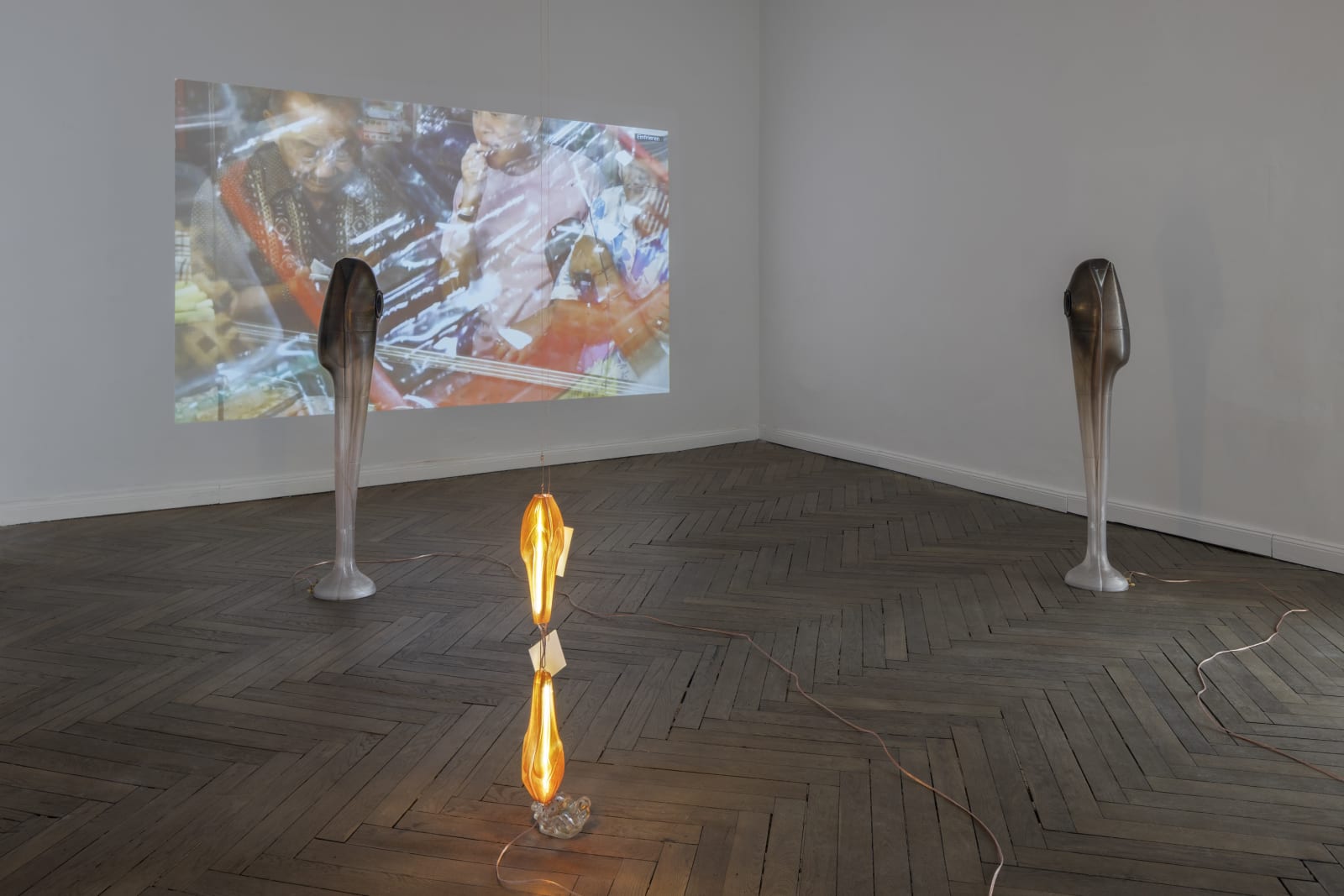Lying on the floor and piercing through the wall, Lucas Odahara’s runway Os Desorietes da Pantera (2021) greets the viewer at an angle. Its ceramic tiles in lemon and lilac are bunched up to evoke fragmented but spirited bodies. With this work, Odahara pays homage to the Baile Pantera Gay ballroom community from Brazil. By inviting the collective CFGNY to activate the work in 2021, Odahara taps into a latent coalition between South American and South/Southeast Asian communities, venturing beyond their shared (post-)colonial experience centered on rubber. Chen Dandizi’s The Sun Never Sets (2020) also peers into the colonial deeds, but in a manner that consecrates mundane occurrences into abstract insights. Two televisions sit back-to-back: one plays found footages of sunsets cut before the sun plunging into the water, while the other shows the water surface reflecting some faint afterglow.National anthems of former colonial powers accompany the two-channel installation like siren sounds, ringing the metaphor of the sunset into consciousness.
Social hybridity finds expressions in some artists’works.They include Kim Farkas’s resinous conduits,21-24 / 2 (2021), which suspend joss paper and other found objects sourced from the Paris Chinatown in front of a video journeying through Peranakan and Malay cooking. Nooshin Askari’s drawings nearby mine as well the quandary of identity representation.On the drawings,illustrated geometric cubes confine composite beings, while the grid lines of the notebook paper settle all matters of position and foreshortening—an allusion to our vision and mobility.
One’s physical and metaphysical relations to their environment mark another point of departure. For three thick echoes (2022),Christine Sun Kim hatches three square paper pieces with charcoal lines,leaving behind crevice-like negative spaces that each squeeze “HAND” and “PALM” in next to each other. Echoing one’s gaze, a crisp clapping sound—or perhaps three—crosses the mind to bring forth a synesthetic moment. Xie Lei’s painting Revelation (2022) studies the gratifying instant of taking off one’s own disguise. The thinned paint used to depict the mask draws the earthen face behind it in horizontal strokes to the tonal yellow in the background. A contextual and sentimental intuition of the human condition forms in accordance.
With some artists’ attention paid to the perception of their surroundings, the surroundings themselves are destined to receive scrutiny as well. The installation hold I (2022) by Zishi Han shrouds those who pass by with the draping chains of a disembodied aluminum fly screen. Its Geräusch emanating from the heart of the amplifier captures the senses as if it were alive. Johanna Unzueta’s sculptures refer to industrial objects through craft. Posing as auxiliary architectonic parts, these objects made of felt and wood use their alternative textures to render whimsical the forgettable interior hardware.
When we place subjects and objects together in a field such as a gallery space, the fact that many of the agents are—through their installation strategies—mirroring this setup communicates a keen sense of self- awareness. This awareness of the self, particularly that of its spatial presence, both socially and individually speaking, probes in our context what comprises “Asia” and other geographical concepts, and it determines each work’s varying affinity to the concepts.Atlas of Affinities still has blank pages,and how those remaining charts shall be drawn depends on the affinities we are willing to identify. (Text by Jacob Zhicheng Zhang)















